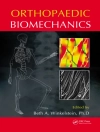This title combines the many schools of thought on psychotherapy into one reader-friendly guide that coaches psychotherapists through the various techniques needed as the field expands. Unlike any other book on the market, this text considers all of the simultaneous advances in the field, including the neurobiology of emotions, the importance of the therapeutic relationship, mindfulness meditation, and the role of the body in healing. Written with genuine respect for all traditions from CBT to psychodynamics, the book unifies views of psychopathology and cure based on the notion of the mind-brain as an organ of affect regulation. The book accounts for the tasks that characterize psychotherapist activity in all therapies, how they are performed, and how they result in therapeutic change. The book also reviews the various pathologies seen in general practice and guides the reader to the specific therapist-patient interactions needed for their resolution.
With its big-picture focus on clinical practice,
Psychotherapy: A Practical Guide is a concise resource for students, psychotherapists, psychologists, residents, and all who seek to integrate what is new in psychotherapy.
Зміст
Avoidance of affect, a basic human instinct operating throughout development.- How painful affects are detoxified in psychotherapy and in life.- Creating a safe and attuned context.- Bringing dreaded feelings into consciousness.- Challenging and inviting change of dysfunctional patterns of though, values and behavior.- Building a narrative framework to support change.- Seeking to understand what is observed.- Introduction: Critical periods in development and the problems they pose.- Group One: Schemas, nonverbal learned behavior patterns that increase pleasure and avoid pain.- Group Two: Dissociative patterns.- Group Three: Inborn avoidance mechanisms: Anxiety, depression, and obsessive-compulsive patterns.
Про автора
Jeffery Smith, MD, Associate Clinical Professor of Psychiatry, New York Medical
College, Valhalla, New York.












